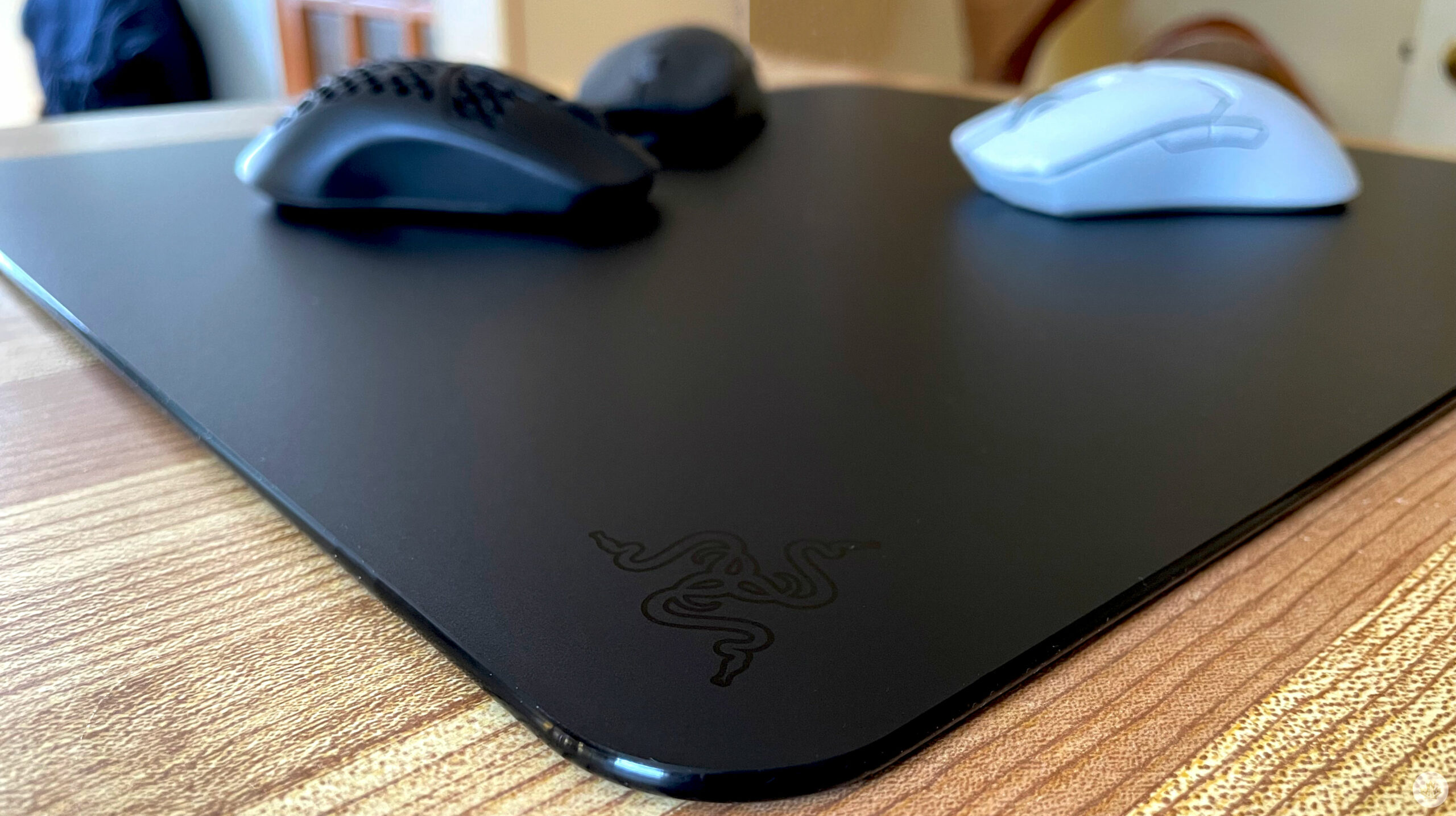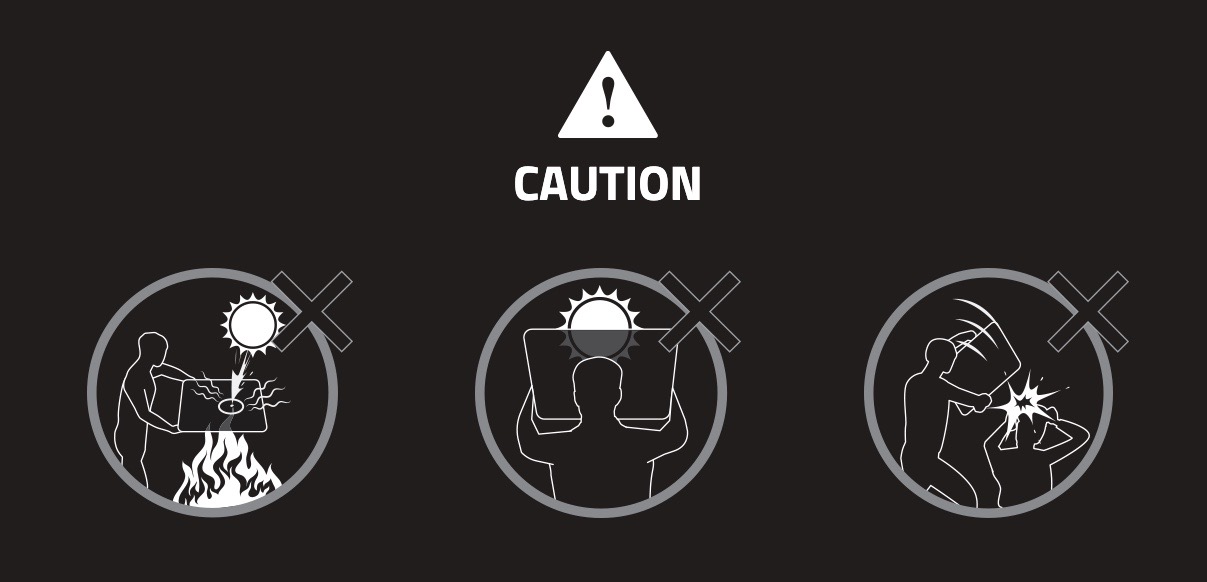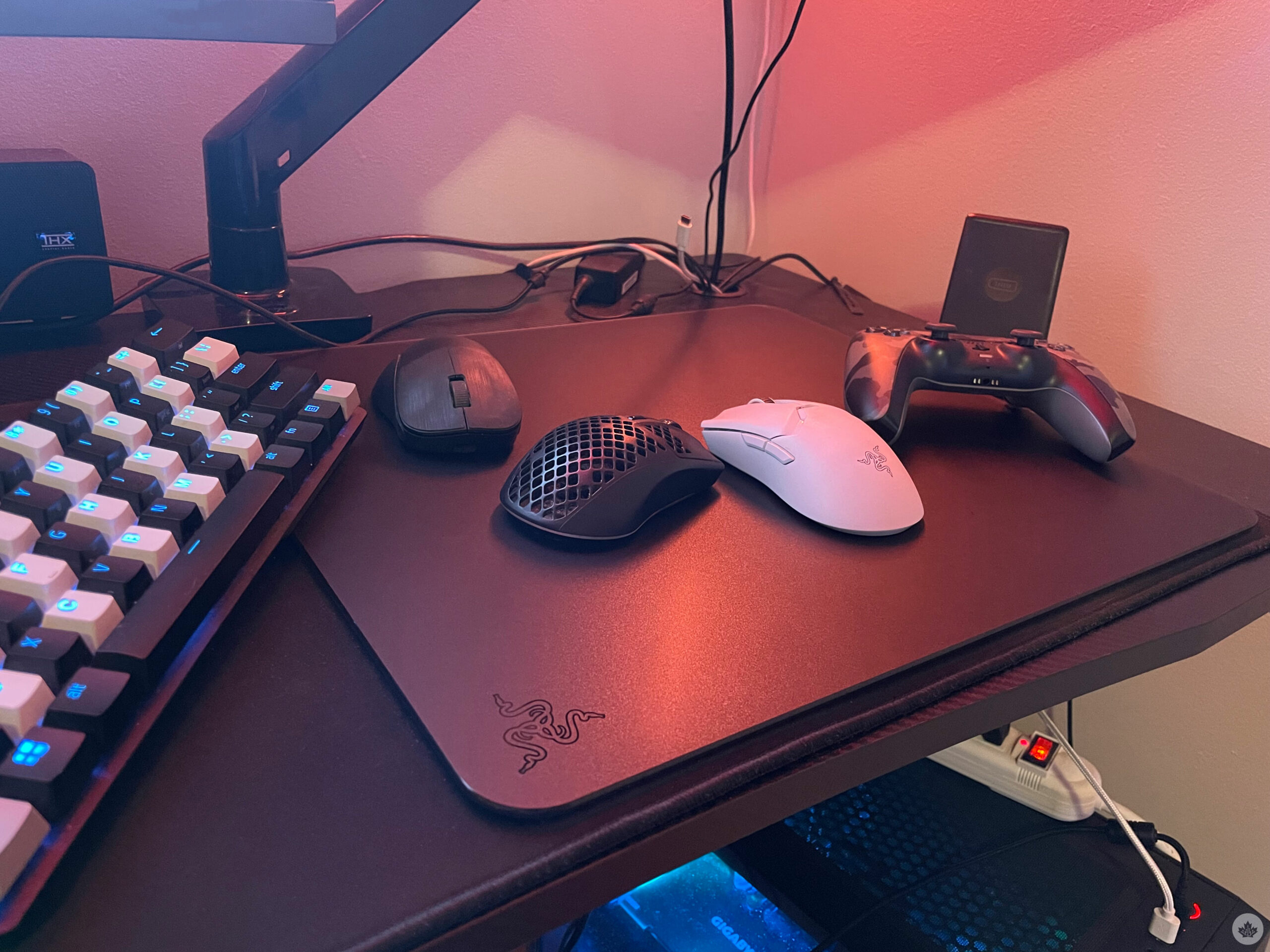
When Razer emailed me about its new mouse pad offering, the Razer Atlas, I was baffled when I realized it features a tempered glass surface.
Until then, I was oblivious to the fact that tempered glass/tempered glass-coated mouse pads exist, and Razer wasn’t the first company to manufacture one. The likes of Skypad, Glorious and Pulsar already sell glass mousepads. However, the company that is capable of making glass mousepads popular among gamers is surely Razer, and that’s why I was excited to take it for a spin.
At first, I was skeptical of using a mousepad with a tempered glass top. I know that most modern mice with PTFE (polytetrafluoroethylene) work on almost everything, including glass desks. However, they don’t track as well as they do on a good ol’ mousepad.
The skepticism went away within the first few minutes of using the Razer Atlas. It is, without a doubt, the best mousepad that I’ve ever used. Micro-adjustments on the mouse are effortless, and so is tracking. However, the pad has drawbacks as well.
The Razer Atlas is durable and scratch resistant
The Razer Atlas comes in a single 17.72-inch x 15.75-inch size option in White and Black colours, is roughly 5mm thick and weighs nearly 2kg.
The mousepad is big enough for all types of gamers, regardless of how aggressively you move your mouse around, though it won’t cover your desk completely. The Atlas also features a high-quality rubber grip base that prevents the pad from moving around. The rubber grip performs as expected, and even when intentionally trying, the mouse pad doesn’t skid from its spot. The overall build of the mousepad is solid and it feels both premium and durable. In essence, since the mousepad will always remain stationary on your desk, it should last forever. The top surface is scratch, dirt and dust-resistant, so the mousepad should ‘look new’ all its life. However, if you’re a ‘rage-quitter,’ don’t get the mousepad. Smashing it on the floor will likely break or crack it.
The overall build of the mousepad is solid and it feels both premium and durable. In essence, since the mousepad will always remain stationary on your desk, it should last forever. The top surface is scratch, dirt and dust-resistant, so the mousepad should ‘look new’ all its life. However, if you’re a ‘rage-quitter,’ don’t get the mousepad. Smashing it on the floor will likely break or crack it.
The tempered top surface is ultra-smooth but also has micro-etched 2μm textures that are reminiscent of the back panel of the iPhone 12 and 13, and don’t scratch the wrist. Razer says the texture allows optical sensors at the bottom of the mouse to function accurately, ideal for gamers who prefer quick and precise movements and want to avoid spin-outs. Spin-outs are where the mouse’s optical sensor fails to catch up with the speed of the flick, and the mouse performs extra movements that you did not intend to do.
I tried the mousepad with three different mice, all with PTFE feet. It worked perfectly with the Razer Viper V2 Pro, the Cooler Master MM731, and the SteelSeries Aerox 3. I don’t own a mouse that doesn’t have PTFE feet, though Razer says that mice with feet made of other materials may result in “unexpected wear and tear of the mouse feet, mouse mat, or both.”
There are no RGBs, and because of this, no USB ports of any sort and no cables to further worsen my already unsightly cable management. The Atlas is simply a matte-ish textured heavy slab of glass with a rubber grip, and the Razer logo etched onto it.

Wrist-fatigue is real
While the textured surface doesn’t scratch the wrist, it does hurt to have your arm/wrist placed on glass for extended periods of time. I work on my PC for eight hours every day, and then game for an hour or two later at night. With a padded mousepad, wrist pain almost never occurs. With my regular mousepad, I get through roughly 5-6 hours before I feel any fatigue in my wrist.
With the Razer Atlas, however, I’ve found that the wrist fatigue starts kicking in much sooner in the day. Note, the Atlas isn’t necessarily the culprit for my wrist pain. Years of gaming for extended periods without no wrist support/padded mouse pad is likely the reason, and now, resting my hand on the glass surface just makes it fatigued sooner than normal.
Funnily enough, Razer’s website also warns against certain uses, such as wielding the mousepad as a weapon or looking at the sun through it. Thanks, Razer.

Razer also advises against placing “very hot” or “very cold” items on the Atlas, so no coffee or soda on the mousepad.
Further, unlike a regular mousepad, the Razer Atlas is not portable. Normal mousepads are light, and can fold or roll up. The Atlas, on the other hand, is heavy and can’t be folded (duh), stored away or carried around easily.
Razer also says that the Atlas is specially treated for quieter mouse movements, and while the mousepad is fairly quiet, it can’t be compared to the quietness of a regular mousepad. Noise is inevitable when you’re constantly dragging a mouse against a textured glass surface, though the slight noise doesn’t make or break the Razer Atlas.
Micro-etched texture for supreme tracking on the Razer Atlas
For starters, maintenance for the Razer Atlas is essentially non-existent. Unlike a traditional fabric mousepad, the Atlas doesn’t get dirty or grimy over time. You’ll likely only need to wipe it off with a damp cloth once a month to keep the mousepad in optimum condition. Razer advises against using soap or harsh cleaning agents on the mousepad.
The rubber grip base is reliable and allowed me to rest assured that the Atlas will not move from its place while I’m gaming, regardless of how aggressively I flick my arm around it.
Since the surface is micro-etched with texture, it allows the mouse to move around effortlessly and without any resistance. This allows for supreme tracking in games where keeping your crosshair at a moving enemy is vital. I never really had a problem with my regular mousepad when it came to tracking, but now that I have experienced how effortlessly my mouse glides around the Razer Atlas, it is impossible for me to go back to a regular fabric mousepad, even though the Atlas fatigues my wrist quicker.
At the end of the day, the Razer Atlas is designed for gamers who prefer quick and precise movements. Its sturdy build and non-slip rubber grip make it a reliable option for gamers, and its scratch and dust-resistant surface ensures that it will remain in great condition for years to come. However, it is not without its drawbacks, such as the potential for wrist fatigue with prolonged use and the inability to fold or roll up for portability. Overall, the Razer Atlas is an excellent choice for gamers looking for a high-quality and long-lasting mousepad.
The Razer Atlas is available on Razer’s website in Black and White colourways for $139.99. Alternatively, you can also purchase it from Amazon for $134.99.
MobileSyrup utilizes affiliate partnerships. These partnerships do not influence our editorial content, though we may earn a commission on purchases made via these links that helps fund the journalism provided free on our website.
MobileSyrup may earn a commission from purchases made via our links, which helps fund the journalism we provide free on our website. These links do not influence our editorial content. Support us here.







